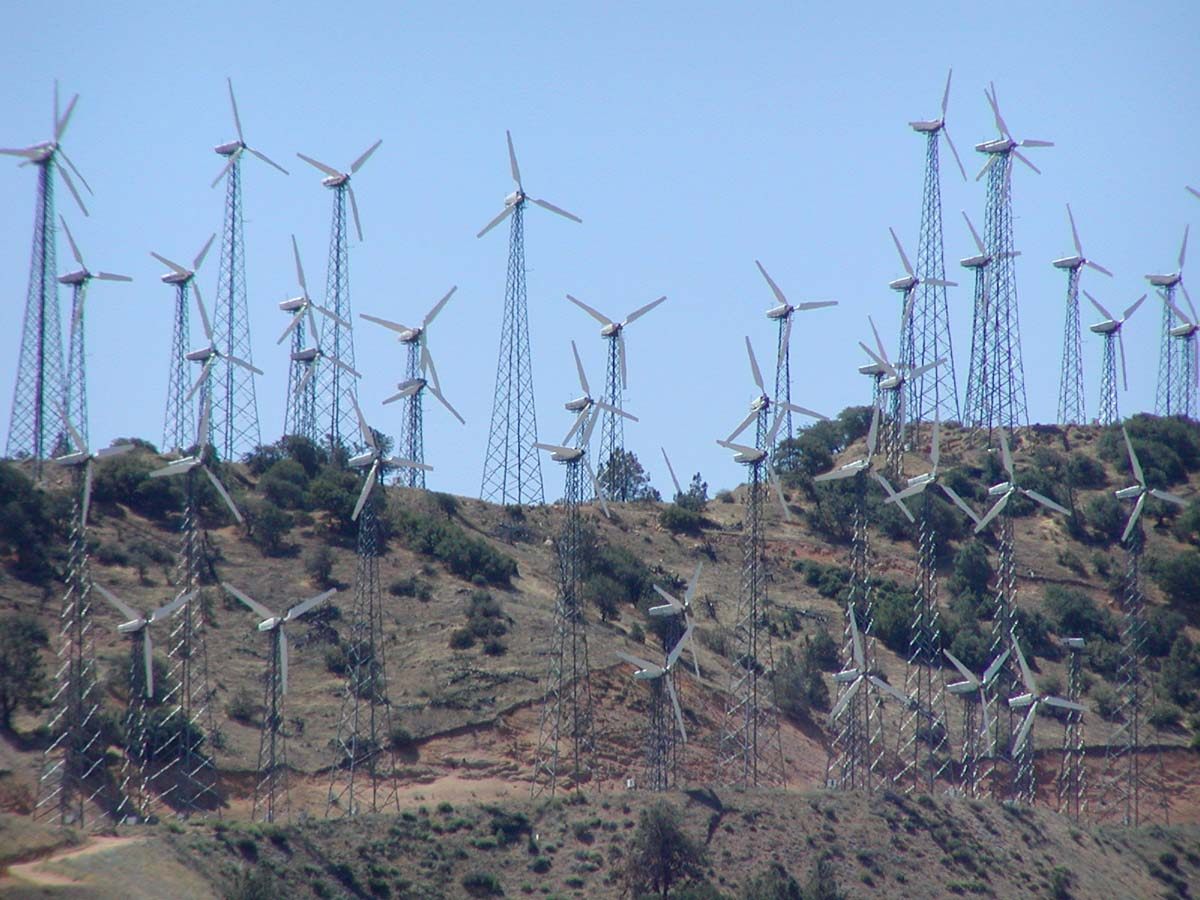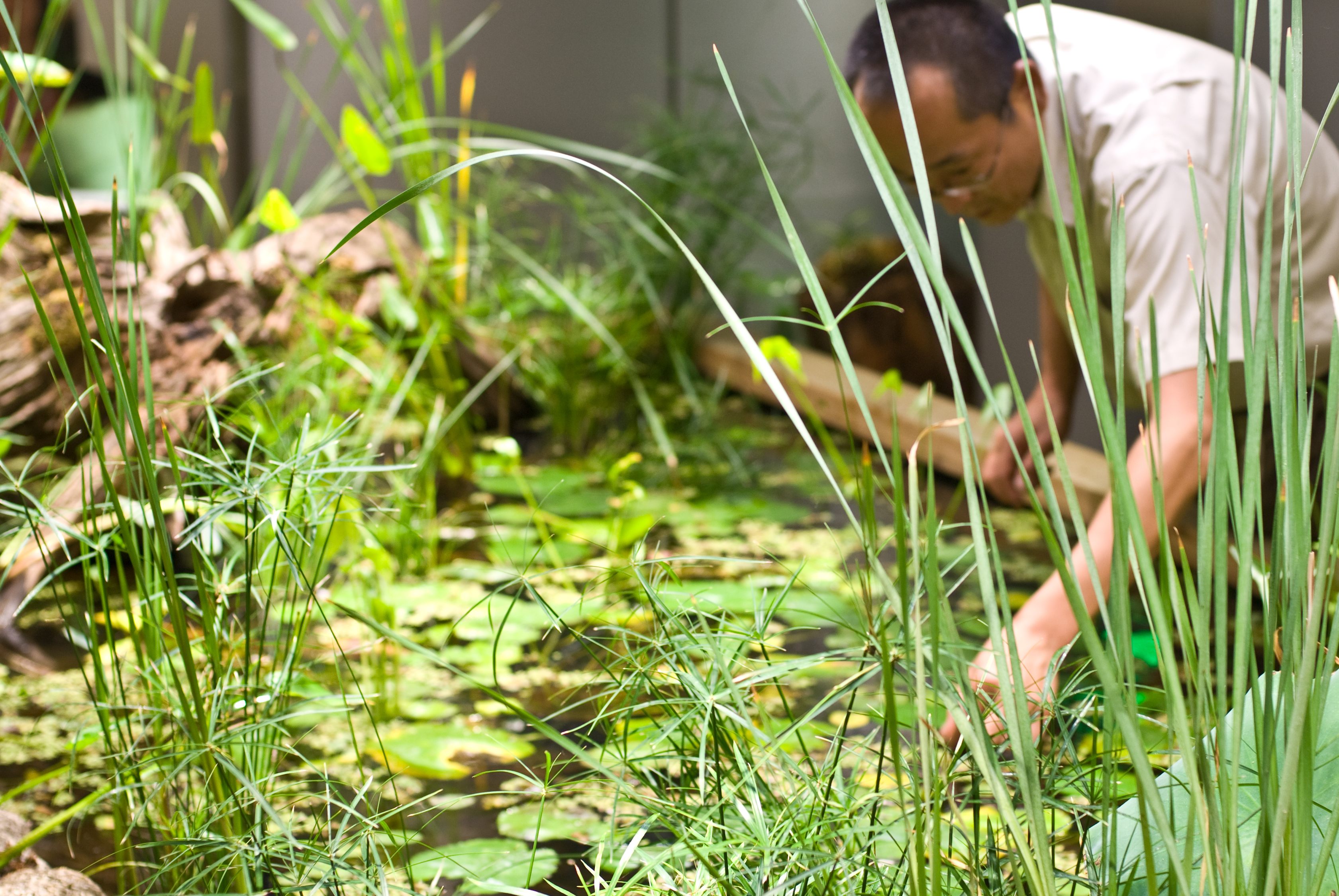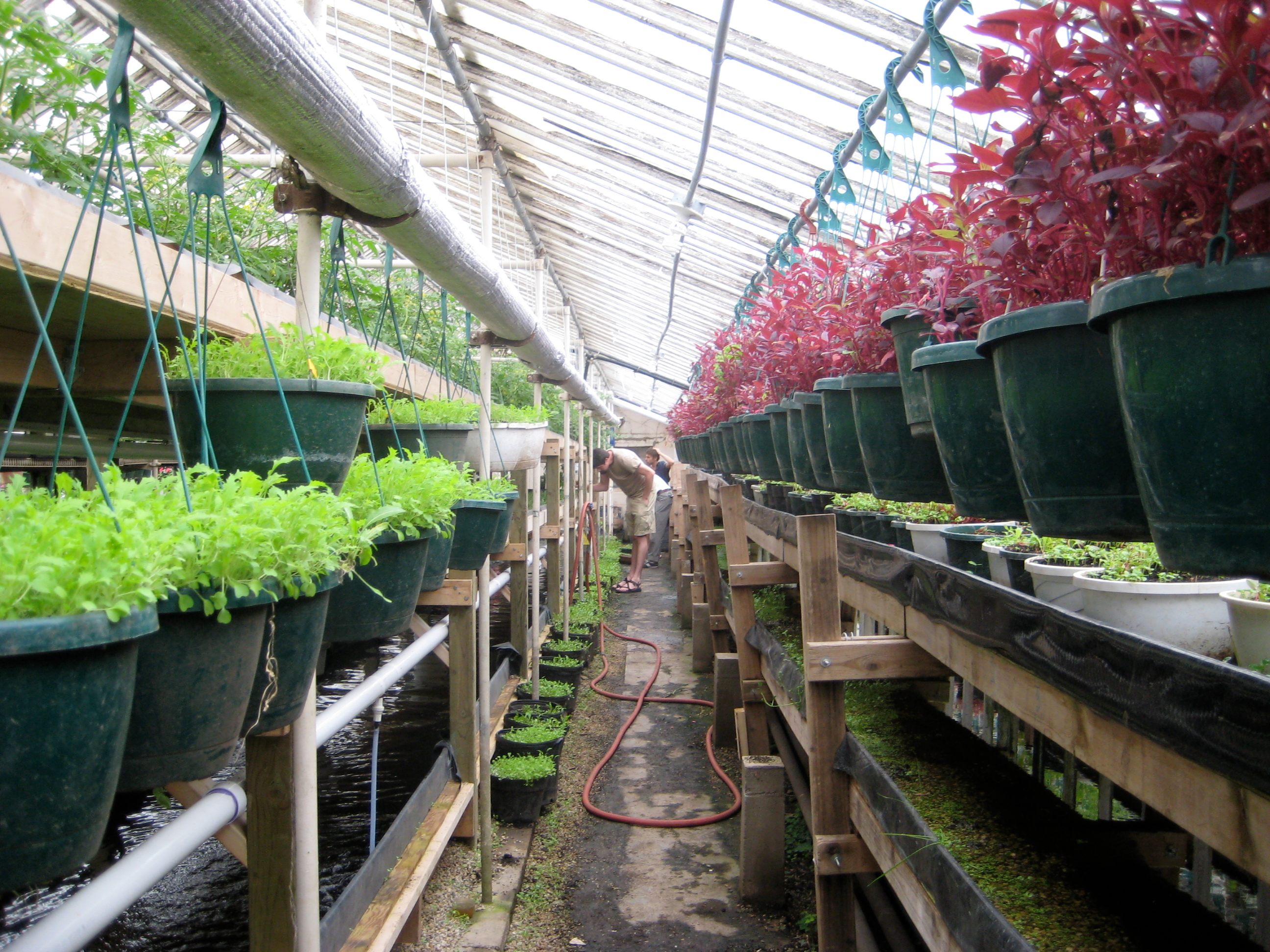Moose Milk and Hobbit Farms: 8 Examples of Outsider Agriculture

Solucar, Europe’s largest solar power complex. (Photo: Koza1983/WikiCommons/CC BY 3.0)
When you think of a non-industrial farm you probably think of some bucolic, pastoral setting: dairy cows calmly chewing on hay, wheat fields swaying in the breeze, and horses relaxing in paddocks. What you probably don’t think of are super-specialized farms to harvest power, or farms with a resident population of dangerous animals that aren’t meant for eating.
From glowing solar towers in Seville and underground fish tanks in Milwaukee to moose being milked in Russia, these 8 farms certainly aren’t your grandfather’s pumpkin patch. Let’s take a look at how some of the strangest farms across the globe are shaking up one of the world’s oldest professions.

1. SOLUCAR SOLAR POWER COMPLEX
Sanlucar la Mayor, Spain

PS20 and the heliostats up close. (Photo: Big Max Power (BMP)/Flickr)
Approximately 20 miles west of Seville, Spain, lies Europe’s largest solar power facility, Solucar. Established in 2007, the Solucar facility contributes hugely to Spain’s energy budget—just over eight percent of homes in Spain are powered solely through solar.
Soaring a few stories above the Spanish plains, PS10 and its neighboring tower, PS20, are “solar furnace” towers. These towers are paired with a moveable array of mirrors called heliostats, which direct sunlight to a heat exchanger located at the top of the tower. The receiver converts the solar energy into steam, which drives turbines to produce electricity.
To get a sense of how huge this place is, PS20 uses 1,255 heliostat mirrors alone. The heliostats are re-positioned throughout the day in order to reflect the most sunlight possible.
 PS10 glinting in the sunlight. (Photo: Álvaro C.E./WikiCommons/CC BY 3.0)
PS10 glinting in the sunlight. (Photo: Álvaro C.E./WikiCommons/CC BY 3.0)
2. SAMUT PRAKARN CROCODILE FARM
Thai Ban, Thailand

Inadvisable behavior on the crocodile farm. (Photo: Sivakrit Saravit/WikiCommons/CC BY-SA 4.0)
Thailand: the land of spicy curry, sun-kissed beaches, and lush forests. Also, apparently, the land of men sticking their faces into the toothy maws of crocodiles.
For only 300 baht (about $3.00 USD), visitors can gain entrance into the Samut Prakarn Crocodile Farm, where 60,000 crocodiles share precious real estate with Asian elephants, tigers, and an assorted range of monkey species.
If just looking at the animals from a distance doesn’t suit your fancy, you can attend the world renowned crocodile show, where performers pester trained crocodiles by sticking their feet, head, arms, and other appendages into their mouths.

The world-famous crocodile show. (Photo: Sivakrit Saravit/WikiCommonsCC BY-SA 4.0)
3. HOBBITON
Matamata, New Zealand

Once home for a hobbit, now home for a sheep. (Photo: Tara Hunt/Flickr)
The Shire is a sheep farm. No, really—Hobbiton is a working sheep farm on New Zealand’s North Island. It is also dotted with tiny hobbit houses (which the sheep have reclaimed), and served as the real-life setting of the Shire in the film adaptations of the Lord of The Rings trilogy.
Visitors can tour the working farm by foot or off-road vehicle. Though most of the hobbit houses used in the movies are roped off, visitors can pop in to the Green Dragon Pub to have a drink. It’s the planet’s only working pub located in a hobbit house - how could you miss that?

Bilbo’s house. (Photo: Tom Hall/Flickr)

Hobbit houses everywhere. (Photo: Tara Hunt/Flickr)
4. TEHACHAPI PASS WIND FARM
Tehachapi Pass, California

Older generations of windmills. (Photo: Stan Shebs/WikiCommons/CC BY-SA 3.0)
One of the first large-scale wind farms in North America, the Tehachapi Pass Wind Farm is also one of the most important renewable power corridors in the country. Providing up to 800 million kilowatt hours of electricity, the farm exports power all over central California.
Because the farm was founded in the early 1980s, you can actually see multiple generations of windmills operating in one location. The size of the fan blades—directly correlated to the energy output of the windmill—has increased dramatically in the last thirty-odd years as our understanding of the physics involved with wind power has improved.
From the 45-foot-tall relics of the 1980s to the hyper-modern, highly efficient windmills arcing over 500 feet into the sky today, the Tehachapi Pass Wind Farm is a living testament to how far we’ve come in our dedication to renewable energy.
 (Photo: Ikluft/WikiCommons/CC BY-SA 3.0)
(Photo: Ikluft/WikiCommons/CC BY-SA 3.0)
5. KOSTROMA MOOSE FARM
Kostroma, Russia

Happy moose in Kostroma. (Photo: Alexander Minaev/WikiCommons/CC BY-SA 3.0)
Located on the banks of the Volga River deep in Russia is one of the strangest farms on the planet: the Kostroma Moose Farm.
The farm is dedicated to the production of moose’s milk, which comes from the 15 cows on site. The milk, rich in iron, selenium, zinc, and lypozyme, is then supplied to a local sanatorium, where it is used to treat peptic ulcers and a host of other medical conditions.
Beyond the moose-milk operation, the farm is a research facility, as all of the moose are fitted with radio-transmitters in order to track and understand their behavior. Because moose are not a truly domesticated animal, the farm practices a technique called “moose ranching”—the animals are allowed to roam free in the forest during the summer once they reach a certain age. They voluntarily return to the farm in the winter in order to partake in daily feasts of steamed oats.

Moose love on the farm. (Photo: Alexander Minaev/WikiCommons/CC BY-SA 3.0)

Moose milking. Yes, this is a real thing. (Photo: Alexander Minaev/WikiCommons/CC BY-SA 3.0)
6. HOGPEN HILL FARMS
Woodbury, Connecticut

Part of Tufte’s Continuous Silent Megaliths Series (Photo: pedrik/Flickr)
Welcome to the fascinating and bizarre world of Edward Tufte.
A Yale computer scientist and statistician, Tufte is devoted to bridging the divide between data visualization and physical art. His 284-acre farm, Hogpen Hill in Connecticut, is a whimsical ode to sculpture gardens and installation artwork.
Ongoing now is Tufte’s Continuous Silent Megalith Series, for which he has created massive landscapes out of stacked boulders and coniferous trees. Open houses are held for one day a year only on the farm, so consider yourself lucky if you get to see these amazing pieces up close.

A Gulfstream trailer suspended on a pole on Edward Tufte’s property. (Photo: David Smith/Flickr)

(Photo: David Smith/Flickr)
7. PASONA O2 URBAN FARM
Tokyo, Japan

Underground gardening at the Pasona 02 Headquarters. (Photo: Henrik Moltke/Flickr)
The unassuming former bank vault turned global headquarters of Pasona, a Japanese headhunting (in the recruiting sense) firm, in downtown Tokyo carries a secret. Inside the office’s basement lies one of the most innovative agricultural farms on the planet: Pasona O2 Urban Farm.
Created not only to provide nutritious and hyper-local meals for employees, the Urban Farm is also used to experiment with new technologies and provide training to young people interested in agricultural careers. Because of the absence of sunlight—it’s underground, after all—Pasona O2 uses an array of high-tech artificial lamps. The crops are grown mainly through aquaculture, and, notably, without pesticides.

Crops ranging from grains to broccoli are grown underground in Pasona O2. (Photo: Henrik Moltke/Flickr)

(Photo: Henrik Moltke/Flickr)
8. GROWING POWER FARMS
Milwaukee, Wisconsin
 Inside the greenhouse of Growing Power. (Photo: Ryan Griffis/Flickr)
Inside the greenhouse of Growing Power. (Photo: Ryan Griffis/Flickr)
Who would have thought that a former basketball star could solve world hunger by fish-farming in North Milwaukee? Growing Power’s CEO Will Allen, a MacArthur Genius grant winner, established his innovative farm in a derelict plant nursery greenhouse with the hopes of serving fresh foods to underserved local residents at a low cost.
The key to Growing Power’s success lies within its three-tiered aquaponics system. Live perch and tilapia are housed in a lower tank buried underground, and the wastewater from the fish tanks is recycled to watercress and tomato plants on the surface of the greenhouse, creating a highly efficient closed loop.

(Photo: Ryan Griffis/Flickr)

(Photo: Ryan Griffis/Flickr)























Follow us on Twitter to get the latest on the world's hidden wonders.
Like us on Facebook to get the latest on the world's hidden wonders.
Follow us on Twitter Like us on Facebook